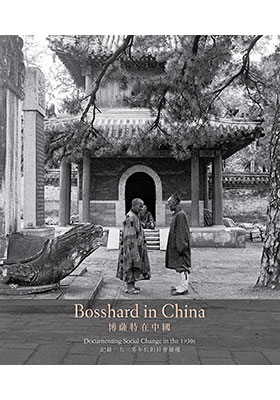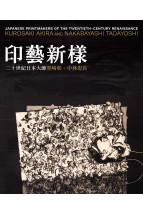Bosshard in China 博薩特在中國
Documenting Social Change in the 1930s 記錄一九三零年代的社會變遷
ISBN : 978-988-19025-3-5
Distributed for HKU Museum and Art Gallery 香港大學美術博物館
May 2018
156 pages, 9″ x 10.625″, over 150 b&w illus.
- HK$200.00
Also Available on
Bosshard in China offers a comprehensive sweep of black and white photographs and documentary films produced by Swiss photojournalist Walter Bosshard. Living and travelling extensively in China from 1933 to 1939, Bosshard was one of the earliest journalists to record this critical decade in Chinese and world history.
Walter Bosshard (1892–1975) was a pioneer in the field of photojournalism. A master of both the word and the photographic eye, he made a name for himself as an adventurer and bridge builder between Asia and Europe, reporting on key political events and daily life. Today, his photographs and films are a rich source of information for understanding global history, specifically the visual memory of China between 1930 and 1950.
Soon after entering the field of international photojournalism, Bosshard was given two dream assignments. In 1930, he spent several months in India reporting on the growing unrest and independence movement. He succeeded in capturing private moments from the daily life of the usually camera-shy Mahatma Gandhi, along with several of his close colleagues. A year later, he scored another resounding success, this time with photographs from an airship headed to the Arctic. Based on these reports, Bosshard became a star attraction. In August 1931, the Berliner Illustrirte Zeitung even included his portrait on the front page. The story focused as much on the adventurous photojournalist as on the expedition’s scientific mission.
Walter Bosshard’s first assignment in China was in 1931. In April of that year he travelled to Nanjing in time for the opening of the Chinese National Assembly on the 5th of May. 475 deputies from every Chinese province had gathered in Nanjing, then the capital of China. For his essay in the Berliner Illustrirte Zeitung, Bosshard succeeded in meeting with notable military and political personalities, including Chiang Kai-shek, his wife Soong Mei-ling, the Panchen Lama and the highly influential ‘Young Marshal’ Zhang Xueliang, who controlled Manchuria and was integral to solidifying forces in the country. Bosshard’s reports from Nanjing were the start of a long and intense engagement with China. Two years later, in 1933, he settled in Beijing, where he lived until 1939.
From a journalistic viewpoint, the most exciting events took place in 1938. Walter Bosshard was one of the few foreign eyewitnesses when Japanese troops marched into Hankou on 26 October 1938. For approximately four months prior to that, he had lived through the almost daily air attacks by the Japanese and observed the city’s agony—a defining experience that he dealt with in an unpublished 247-page novel.
A shorter, but perhaps more crucial episode for his career took place in May 1938, when Walter Bosshard succeeded in visiting the already legendary Mao Zedong in his compound in Yan’an. Agnes Smedley, an American journalist and sympathiser with the Chinese Communists, was able to obtain a letter of recommendation from Zhou Enlai, Mao’s representative in Hankou.
In the years that followed, writing became more important for Bosshard, as photography gradually slipped into the background. During the Second World War he continued to work as a photojournalist, also outside of Asia.
《博薩特在中國:記錄一九三零年代的社會變遷》呈獻一系列由瑞士攝影記者瓦特爾.博薩特所拍攝的黑白照片和紀錄片。在1933年至1939年間,博薩特旅居並走訪中國,成為最早記錄這於中國和世界歷史上屬關鍵十年的記者之一。
瓦特爾.博薩特(1892–1975)是新聞攝影界的先驅。作為文字與「攝影眼光」大師,博薩特以作為冒險家和歐亞之間的橋樑而聞名,報導關鍵的政治事件和人民的日常生活。今天,博薩特的攝影和膠卷作品成為了解世界歷史,尤其是1930年至1950年的中國之視覺回憶的豐富來源。
在剛發展國際新聞攝影事業後不久,博薩特得到兩個夢寐以求的工作機會。1930年,他在印度逗留了數個月,報導當地持續發生的騷動和獨立運動。博薩特成功用鏡頭捕捉到向來在鏡頭前顯得較為羞澀的聖雄甘地、和其親密戰友的日常生活片段。一年後,這位攝影記者因拍攝到飛往北極地區的飛船而蜚聲國際;憑藉上述的報導,博薩特已經成為備受矚目的人物。1931年8月,《柏林畫報》更在頭版刊登了博薩特的肖像;該篇報導對這位新聞攝影冒險家的關注,並不亞於對當時科學探險計劃的注目。
1931年,博薩特展開在中國執行的第一次拍攝任務。同年4月,他赴當時的首都南京出席5月5日舉行的國民議會開幕儀式,來自全國各省的475名代表均聚首於此。在《柏林畫報》發表的報導中,博薩特成功會見重要的軍事和政治人物,如蔣介石和夫人宋美齡、班禪喇嘛,和極具影響力、掌控滿州並致力於團結國內勢力的「少帥」張學良。這次於南京的報導拉開了博薩特與中國持久而緊張的關係,兩年後即1933年,他定居北京,直至1939年為止。
就新聞報導的角度而言,最讓人驚心動魄的事件發生於1938年。當日軍在10月26日進軍漢口時,博薩特屬少數的外國目擊者之一。在此前的四個月內,他從頻繁、幾乎每天都進行的日軍空襲中活過來,目睹這座城市滿目瘡痍的痛苦──這個畢身難忘的經歷促使博薩特寫下一本長達247頁、卻未曾出版的小說。
同年5月,博薩特成功訪問到當時身在延安、已為傳奇人物的毛澤東。此短暫的採訪卻為他的職業生涯寫下至關重要的一頁。對中國共產黨人深表同情的美國記者艾格尼斯.史茉特萊,為博薩特取得一封來自毛澤東於漢口的代表──周恩來撰寫的推薦信。
隨後的數年對博薩特來說,寫作比攝影變得更加重要。在第二次世界大戰期間,他繼續出任新聞攝影記者,其足跡亦不限於亞洲。



